- Home
- Steven Pressfield
The Lion’s Gate Page 2
The Lion’s Gate Read online
Page 2
You tried to laugh this stuff off, but it got to you. Remember the song “The End,” by Jim Morrison and the Doors? It was popular then. There was a line that said something like “This is the end, my friend, this is the end.” That’s what those weeks felt like.
Cairo TV played endless footage of Arab mobs in the streets, carrying banners and chanting, “Kill the Jews!” and “Death to the Zionists!” The Voice of Thunder quoted Azzam Pasha of the Arab League from 1948:
This will be a war of extermination and a momentous massacre, which will be spoken of like the Mongolian massacres and the Crusades.
The Arab world had a leader then—Gamal Abdel Nasser, the president of Egypt—such as it had not had in the modern era before or since. (Egypt was then still officially the United Arab Republic, though its partner, Syria, had withdrawn from the union in 1961.)
Nasser’s vision was pan-Arabism: one state stretching from Central Asia across the Middle East and Africa to the Atlantic. He wanted a modern Arab world, secular, socialist, armed with the latest weapons and equipped with the newest technology. To that end, Egypt and Syria had allied themselves with the Soviet Union, which was then at the peak of its wealth and power.
President Gamal Abdel Nasser, left, with army chief Abdel Hakim Amer and Egyptian pilots a few days before the war.
Nasser’s Russian-supplied air force possessed 480 combat aircraft, all jets, including 180 MiG-17s and MiG-15s, 80 MiG-19s, and 130 of the latest MiG-21s, capable of flying at twice the speed of sound. In addition, the EAF had 20 Sukhoi-7 fighter-bombers and 70 Tupolev-16 and Ilyushin-28 bombers, plus 90 Ilyushin and Antonov transport planes and 60 helicopters. Israel had no bombers at all. The Syrian Air Force augmented Egypt’s with 120 more Soviet-built planes, including MiG-19s and MiG-21s. The Iraqis could contribute 200 more.
Egyptian armor consisted of roughly 1,200 tanks, including 300 new Soviet T-54s and 200 of the even newer T-55s. These were the same tanks the Russian Army used. Syria possessed 550 more Soviet tanks, and Iraq added 630, for a total of 2,400, not counting Lebanon’s pledged 130 and 100 more from Saudi Arabia. Against this, Israel’s armored brigades could put into the field only 800 tanks—250 British Centurions, 200 American M48 Pattons, plus 150 light AMX-13s and 200 Super Shermans, World War II tanks up-gunned and reconfigured for desert fighting.
Into Sinai over the past month Nasser had poured 950 tanks, 1,100 armored personnel carriers, 1,000 artillery pieces, and 100,000 troops. The Egyptian and Syrian air forces were trained by Soviet instructors. Air defense radar was Soviet built and Soviet installed; in many cases it was Soviet manned. Egypt’s ground defenses in Sinai—minefields, artillery “boxes,” and bunker emplacements—were built by and designed by Soviet engineers according to the latest Soviet military doctrine.
The bone in Nasser’s throat was us. At the Arab League Summit in 1964, thirteen nations under Nasser’s leadership had created the United Arab Command, a military entity pledged to eradicate “the Zionist entity.” The word “Israel” appeared on no Arab maps.
My unit was called up on May 21. The way it works in Israel is you belong to the reserves. Israel’s standing army then consisted of only three brigades. The IDF is a reservist army. For the force to reach full strength, reserve units are mobilized, meaning their men must leave their civilian jobs and report for military duty. The whole economy grinds to a halt.
My friend Yoram Zamosh, our “A” Company commander, was driving a tractor when a taxi came to mobilize him—the army sent cabs for officers. Zamosh’s radioman, Moshe Milo, was plowing a field too, on his Caterpillar D4. He was a sergeant; a bus collected him along with the other enlisted men on the kibbutz. Yoram and Moshe both had to run for home, with no time even to say good-bye. Just grab a toothbrush, leave a note, and go.
Our battalion assembled at a place called Camp Israel next to Lod airfield, outside Tel Aviv. Paratroop units need to be near airfields for obvious reasons. Tel Nof Air Base was the main facility for paratrooper training. A fence divided the base into two parts. On one side were the swimming pool, the cinema, and the ice cream shop. That was the pilots’ side. On the other side were the jump towers, the obstacle course, and the barracks. That was our side.
Three-quarters of the men in our battalion came from kibbutzim or moshavim (-im is a suffix indicating plural in Hebrew). A kibbutz is a communal farm where all land and goods are held in common. A moshav is similar, except individual families are permitted to possess and farm their own piece of land.
On kibbutzim in those days children were raised not by their parents but communally. They lived in a “Children’s House” and grew up, supervised by their teachers and caretakers, among the other children. The pioneer ideals were still very much in practice then. All kibbutz members were equals. No one got a salary. Meals were taken in the communal dining hall.
Some kibbutzim had only one telephone. The idea of owning your own car was unheard of. The typical kibbutz might possess a couple of old clunkers—a Peugeot or Deux Chevaux or an Israeli-made Studebaker Lark. If you needed to drive somewhere—say, into the city to see a doctor—you put your name on a list and hoped the committee gave you the keys. We rode buses or bicycles or walked. Everybody walked.
A kibbutz could be tough sometimes. When our battalion commander, Uzi Eilam, was twenty years old and had completed his first army service, he wanted to study at the Technion, the Israel Institute of Technology in Haifa. Uzi was already an outstanding leader. Clearly he was destined for big things. The kibbutz took a vote and turned him down. They wanted him at home, working the land.
People think that Israelis of that era were religious. That’s not true. On the kibbutz in those days the ethic was socialist, communal, Zionist—not antireligious but definitely nonreligious. Moshe Dayan, who was born on Israel’s first kibbutz, Deganiah Alef, had never had a bar mitzvah. Many of us were like that. We could light a candle, but we knew only a handful of prayers.
In Israel the fifties and early sixties were called Tekufat HaTzena, the “period of austerity.” The economy was struggling to absorb hundreds of thousands of immigrants, many of whom had been expelled from Arab countries. These were often poor and lacking Western skills or education. On the kibbutz, at least we had enough to eat. You can tell someone who grew up during the Austere Period because their teeth have no cavities. No one could afford such luxuries as sugar or candy.
Israel, as I said, is small. On the kibbutz farms where I and Zamosh and Milo and others of our battalion grew up, you felt like you were living in Kansas. Yet Tel Aviv—our Manhattan—was only an hour and a half away.
At our base near Lod, the brigade began training in earnest. We were so new, we had never even jumped as a brigade. Soon we would be jumping in combat, the rumors said, in Sinai. We lived in shelter halves—two-man tents—in orchards under orange and lemon trees and listened at night on our transistors to the Voice of Thunder. The news was full of stories of Nasser’s troop and tank buildup in Sinai. The UN had a peacekeeping force in the desert. Would they stop him? On May 18 Nasser ordered them out and they went. By May 22 he had closed the Straits of Tiran, sealing off our port of Eilat.
Would there be war? On May 24 we were ordered to stand ready; D-day would be the next morning. That order was rescinded, then repeated on May 25, 26, and 27, and again on May 29 and 30. Each time we stood down, the politicians gave a different excuse. They were “seeking a negotiated settlement” or “exhausting all diplomatic options.” Mostly they were trying to get the Russians to tell Nasser to back off or to convince the Americans or the British and the French to come in on our side.
When you’re a twenty-three-year-old lieutenant, you care nothing for any of this. All you know is that every day that passes without the government making a decision gives the enemy more time to prepare, more time to bring up tanks and guns, more time to dig in and fortify. Every twenty-four hours means more of us will
die.
I remember getting a twelve-hour pass to go home because my mother had taken sick. I hitchhiked but got left off about fifteen kilometers short as darkness was falling. From the road I could look east down the valley toward Jordan. King Hussein’s army had 176 new American Patton tanks; from the border they could reach my kibbutz in under an hour. Syrian armor could roll down from the Golan Heights and be overrunning our defenses even sooner.
Where I stood was only a few kilometers past the ruins of ancient Megiddo—Armageddon of the Bible. I tried not to think of it, but that song by the Doors kept playing in my head.
3.
DOWN IN THE DESERT
I was living in Athens when I got a cable from my father asking me to come home at once. It was understood that no Israeli would wish to be elsewhere when the nation was in danger. For my father, who understood the political and military dynamics of the Middle East as well as any man, to write such a note could mean only one thing: war was imminent.
Yael Dayan is the twenty-seven-year-old daughter of former army chief of staff Moshe Dayan. She has published two well-received novels, as well as essays and journalism, and has acquired a measure of celebrity in the European press. She is also a segen mishne, a second lieutenant, in the reserve forces of the IDF.
I flew back on BEA to Lod, the British-built airfield that would become Ben-Gurion International. My mother picked me up. The date was May 25, 1967. We drove to the mobilization center in Tel Aviv, where I presented my military identification and requested to be sent south, to the Egyptian front. The desk sergeant smiled. “And where do you think everyone else wants to go?”
But my request was approved.
Driving home, my mother and I listened to Nasser’s latest radio harangue, in which the Egyptian president declared that “our ultimate objective will be the destruction of Israel.”
Nasser announced that the armies of Egypt and Syria were now under unified command. He invited Jordan to join. Egypt’s president was, he said, in daily contact with the leaders of a dozen other Arab states, every one of which had pledged troops, arms, or money.
I had dinner with my father that night. He had been visiting the fighting units at the front and was in high spirits. He joked that I had achieved in two hours what he had been unable to accomplish in two weeks: the acquisition of an actual job.
I asked him in what capacity he had been touring the forward units.
“As a uniformed soldier, accompanied by a conducting officer,” he said. Ezer Weizman, who was IDF chief of operations (and my father’s brother-in-law; Ezer’s wife, Reumah, was my mother’s sister), had gotten my father mobilized, though without rank or authority. “I show up as a simple pain in the neck.”
He had met with Ezer that morning, my father said, and later with his dear friend Meir Amit, who was Israel’s chief of intelligence. Egypt now had nearly a thousand tanks in Sinai, threatening our southern border. If you were offered a post, Amit had asked my father, would you take it? Dayan gave him this note for Prime Minister Levi Eshkol:
Dear Eshkol,
I have asked Ezer Weizman to arrange my formal mobilization for active service so that my presence in an army unit will be legal and proper. If you or the chief of staff consider that I may be of help in this war by being given a specific task, I shall, of course, accept. If not, I shall continue in the meantime to be attached to combat units so that I may see developments at close quarters and be able to express practical views on the strength of the army and on what may be done.
Moshe Dayan
25.5.67.
We talked about my assignment. I had been detailed as a correspondent to the ugda of General Ariel Sharon, which was dug in now at Nitzana on the Egyptian frontier.
An ugda is a formation unique to the Israeli Army. Approximately the size of a division, it is configured of independent brigades for the purpose of accomplishing a specific objective or confronting a particular foe. An ugda is a onetime formation. It takes its name from its commander. On the Sinai border, the army had mobilized three. In the north, Ugda Tal (No. 84) under General Israel Tal; in the center, Ugda Yoffe (No. 31) under General Avraham Yoffe; in the south, Ugda Sharon (No. 38) under General Arik Sharon. An independent armored brigade, the 8th, under Colonel Albert Mendler, was positioned farther south, opposite Kuntilla.
My father had been out of the army for ten years, but in the public mind he remained the hero of the ’56 Sinai Campaign and the paragon of the Israeli fighting commander. While we dined, guests continually approached the table, no few in obvious states of agitation.
“When will the government call you, Moshe?”
“Will they make you minister of defense?”
“The people are behind you, General Dayan.”
I asked my father if he expected to be given a command by Prime Minister Eshkol.
Yael Dayan.
“He will call you before he calls me!”
My father spoke of the distinction between “intent” and “objective.” In any military order, intent is inscribed above and supersedes objective.
The issue with Eshkol, he said, was that his intent was to preserve Israel at any cost. To that end, the prime minister set the nation at the beck and call of the Western powers, specifically the United States, while stalling and refusing to make a decision based on our strength alone.
But the prime minister’s intent, my father said, cannot be to preserve Israel at the price of sacrificing her fighting spirit and independence of action.
“To bang on the powers’ doors is to cut off our own balls. We know it and Nasser knows it. What has kept Israel safe for ten years is our enemies’ fear to strike us. The prime minister’s intent must be ‘to preserve the nation by destroying the forces arrayed against it.’”
We are being bullied, my father said, and the only way to handle a bully is to punch him in the face.
“What would you do?” I asked.
“Strike now. As soon as possible. Meet the enemy straight-up and destroy him. There is no other way.”
Outside, my father’s car was waiting. The hour was nearly midnight. He was leaving for the headquarters of Southern Command in Beersheba.
“The prime minister will address the nation in a couple of days,” I said. At the mobilization offices, I had heard of a radio speech planned for the evening of May 29. “Will you listen?”
“Yes,” Moshe Dayan said. “But without relish.”
4.
THE DEATH BURST
The last thing on my mind was Eshkol’s speech. I supposed I would listen when it came on. But my job was to kill MiGs, not to worry about politics. I was so deeply absorbed in my own flying and training that nothing could penetrate the bubble.
Lieutenant Giora Romm is a twenty-two-year-old fighter pilot with Squadron 119 based at Tel Nof Air Base. He will become the first and only “ace” of the Six Day War, shooting down five MiGs.
Every fighter squadron, and probably every operational unit in the world, breaks down into two generations: the old guys—the captains and majors at the top of the food chain—and the young lieutenants at the bottom.
The captains and majors are the senior pilots, the squadron commander and his deputies. In Squadron 119, these are the fliers with operational experience. They had fought in the Sinai Campaign of ’56. They had flown reconnaissance missions over Egypt and Syria and Jordan. They had experienced “triple-A”—antiaircraft artillery. They had engaged in dogfights. They had made kills.
We young guys had done none of that. We tried to imagine what war was like, but the feat was beyond us. To us, war was a cinematic mash-up of Pierre Clostermann memoirs and old Battle of Britain movies.
The old guys were married and had families; they lived in the colony of bungalows in the administrative part of the base. They had cars and washing machines. Their wives took care of everything
for them. I was twenty-two. I was six feet two and weighed 154 pounds. I shared a room in the bachelor officers’ quarters with another pilot, Avramik Salmon. I had no wife. My car was at home with my parents in Tel Aviv. I rode a bicycle. I did my laundry at Ran Ronen’s house, our squadron commander. His wife, Heruta, helped all of us. She hung our socks and flight suits on the line out back and folded them up in neat piles, which we collected later.
Every pilot thinks his squadron is the best. I did and still do. Here’s a story that will tell you about our commander, Ran Ronen:
In training for air-to-air combat, a kill is awarded based on the film in the gun camera. You must have one full second with your pipper—the gunsight—zeroed on the body of the plane you’re competing against. But at that time a practice called “demonstration shots” was permitted. You were allowed to cite gun camera film even if you were not in a sure-kill position and you had not held your sights on the target for a full second. The purpose of this practice was simply to demonstrate at the end of the day, in the briefing room with Ran and the other pilots, that you had been on the other guy’s tail and not the other way around.
One day Ran called the squadron together. “This is bullshit!” he said in that voice that could make you jump six inches out of your chair. From now on, Ran declared, pilots would be allowed to activate the gun camera only when the competing plane was dead center in our sights—a certain kill. And we had to keep that plane in the bull’s-eye for a full second, sixteen consecutive frames of film.
The pilots groaned when they heard this. Do you know how hard it is to keep an enemy in your gunsights for a full second?
“I have no compassion for you,” declared Ran. The sure-kill, sixteen-frame standard would now be called “the death burst.”

 The Legend of Bagger Vance: A Novel of Golf and the Game of Life
The Legend of Bagger Vance: A Novel of Golf and the Game of Life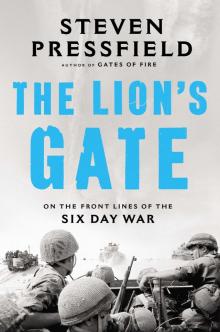 The Lion's Gate: On the Front Lines of the Six Day War
The Lion's Gate: On the Front Lines of the Six Day War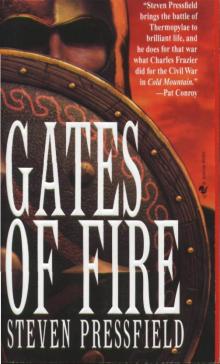 Gates of Fire
Gates of Fire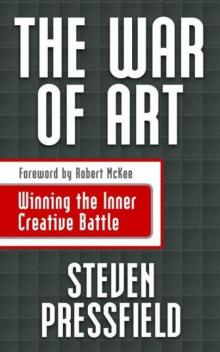 The War of Art
The War of Art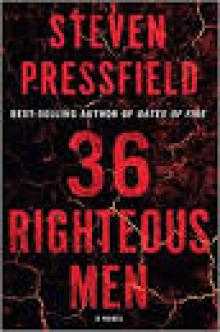 36 Righteous Men
36 Righteous Men The Virtues of War
The Virtues of War The Afghan Campaign
The Afghan Campaign Killing Rommel
Killing Rommel Last of the Amazons Last of the Amazons Last of the Amazons
Last of the Amazons Last of the Amazons Last of the Amazons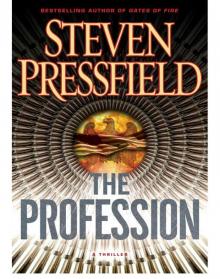 The Profession
The Profession Last of the Amazons
Last of the Amazons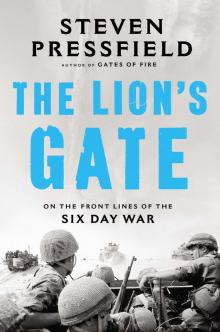 The Lion’s Gate
The Lion’s Gate The Legend of Bagger Vance
The Legend of Bagger Vance Virtues of War
Virtues of War Tides of War, a Novel of Alcibiades and the Peloponnesian War
Tides of War, a Novel of Alcibiades and the Peloponnesian War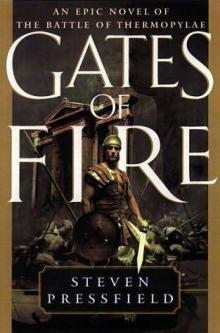 Gates of Fire: An Epic Novel of the Battle of Thermopylae
Gates of Fire: An Epic Novel of the Battle of Thermopylae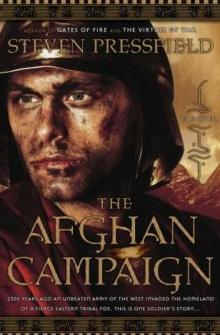 The Afgan Campaign
The Afgan Campaign